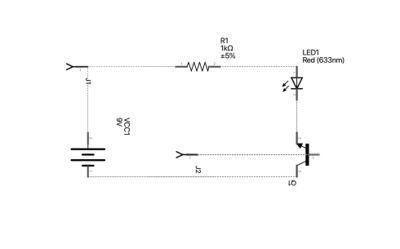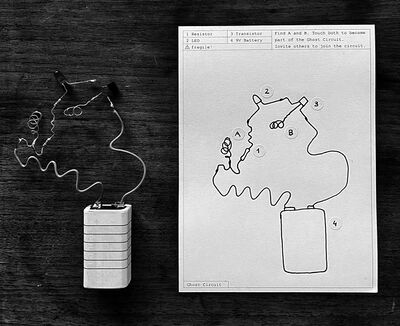User:Ohjian/Thesis-Outline
Thesis Outline
Mode of address and format
For my thesis I imagine a format that one could describe as a Situated and Annotated Manual.
Why a manual?
I want to use the well-known format of the manual to give detailed and technical information about the tool that I am creating in my graduation project. This includes hands-on descriptions on how the modules work and how to use them. This approach is quite formal, using standardized technical terms and schematics to give full insight and transparency.
Why annotations?
With the annotation layer I want to subvert this strictness of the technical manual and add a more intimate mode of address. I am hoping that informal notes, explanations and sketches make the manual more accessible to readers / users who are less familiar with technical terms and descriptions.
Why situated?
The tool I want to create is embedded in a whole context of discourse and practice. To help the reader / user to understand this environment I want to situate the manual and write about these references and relationalities.
Who do I address?
While the manual does justice to the technical complexity of the project, at the same time I want to make sure it is approachable for my specific audience: graphic designers and other makers who are unfamiliar with alternative tools and have little technical experience.
The annotations shall be a fun and playful way to take the technicalities serious yet make them more accessible and less overwhelming.
Writing about the context will help to explain the purpose and relevance of the tool. I hope to encourage readers to experiment with the modules and to reflect on the influence that tools have on their practice.


Standard Technical Schematics of a simple circuit vs. Annotated sketch of a simple circuit
Research question
How could the process of creating and introducing alternative tools help to reflect and re-shape practice?
Or more specific:
How can the concept of Modular Synthesis help to re-think Desktop Publishing?
Table of Contents
1) Introduction
In this chapter I want to introduce the reader to my graduation project and how it is the subject of my thesis:
What is the graduation project about?
First I will briefly describe my graduation project, mainly focussing on the questions what, why and for whom. I will also explain some key terms such as Modular Synthesis and Desktop Publishing.
What is this thesis about?
In this paragraph I want to explain the purpose of this thesis which is two-fold: First I want to introduce my tool to an audience, explaining in detail how it operates and how it can be used. Secondly, I want to investigate the context around my tool and find an answer to my research question:
How could the process of creating and introducing alternative tools help to reflect and re-shape practice?
Or more specific:
How can the concept of Modular Synthesis help to re-think Desktop Publishing?
What is a Situated and Annotated Manual?
In this paragraph I want to introduce the format of the Situated and Annotated Manual as a context-related and audience-specific way to introduce my tool. I will elaborate on the particular approach and purpose of this manual while explaining how to navigate and read it.
2) The context around the tool
Relation to my previous practice
In this section I want to elaborate a bit more on my own practice and why this led me to create my own tool as an alternative to print publishing. I will explain how my purpose is not only to introduce a new tool, but also to enable myself and others to think more critically about the tools they normally use in their making processes.
Relation to a bigger context
This section will be based on my research. I want to give an overview on related discourses and themes:
– how tools shape our practice
– how practice shapes our tools
– human-computer-interaction
– physical interfaces and materiality
– Operation-specific interfaces
Examples of other works and projects
In this paragraph I want to introduce a few other projects that address similar aspects and questions.
3) The tool
This chapter is the core of my thesis, the actual annotated manual that is embedded in a whole context and environment. I want to describe in detail how it is built, how it works and how to use it.
After explaining the overall infrastructure, I want to focus on every single module:
- What does it do?
- What is it for?
- How is it built? (physical interface / components / circuit / code)
- How does it work? (Input / operation / output)
- How to use it? (Examples)
4) The outcome
In this final chapter I want to reflect on the following questions, hoping to also find an answer to the main research question:
– What did I learn in the process of creating my own tool?
– Did the tool lead to unexpected or interesting outcome? (Examples)
– How does the human-computer-interaction change with the physical interface?
– How does it help to reflect on tools and practice?
– What could the future of the tool look like?
– In what scenarios could it be used?
– What role does the manual play to understand and introduce the tool?
Appendix
Glossary of …
- terms (e.g. Modular Synthesis, Desktop Publishing)
- components (e.g. Resistor, Potentiometer)
- tools (e.g. Raspberry Pi, Python, a specific Python library, soldering iron)
